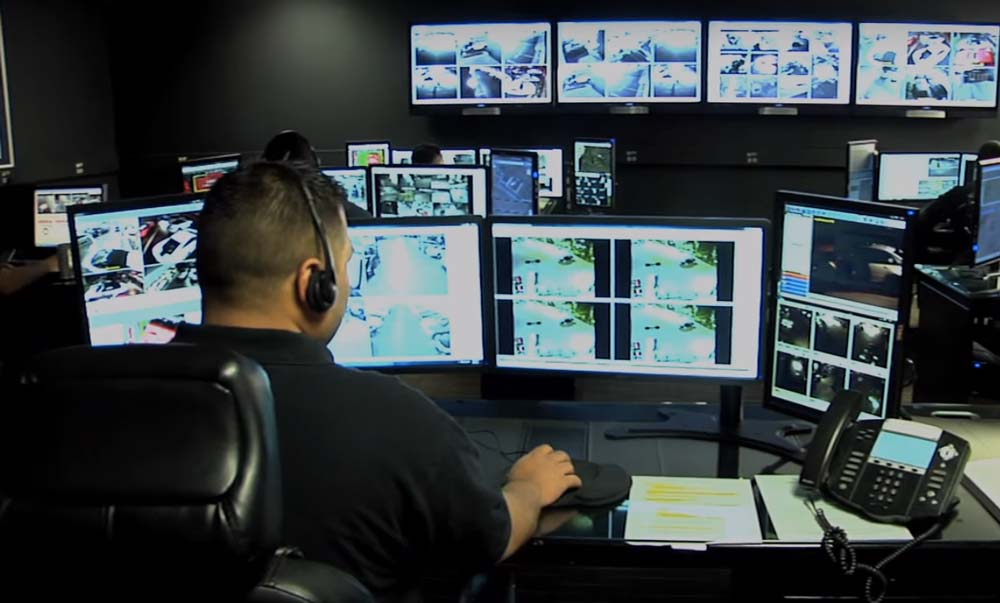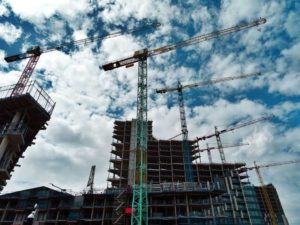Many business owners have cameras set up all around their property, pointed at specific areas, ready to capture suspicious activity and criminal behavior. Sound familiar?
But there is a stark difference between record-and-store cameras and live remote video monitoring services. The former provides video evidence of crimes after they happen, and the latter provides a proactive approach to security based on active deterrence.
The X Factor: Humans!
The not so secret ingredient? People. Anyone with the right amount of cash can purchase the most sophisticated technology out there. But it’s people, that irreplaceable human component, that really differentiates remote video monitoring from other forms of surveillance.
Sure, artificial intelligence (AI) can detect a suspicious event. But it’s the team of humans responding to that event that makes the difference. AI helps them identify security events more quickly, but human judgment is what creates the desired result.
Ideally, team members will have a pre-determined set of protocols to follow − based on what they see on camera − when a security event occurs, which enables them to make the most appropriate response instantaneously. Machines do not yet have the judgment to consistently orchestrate the best response to every security event. Only well trained and responsive humans conducting live surveillance can do this.
All of this is a long way of saying surveillance is only as good as the “surveillor.” Below, we break down three ways that make the role of the “surveillor” irreplaceable:
1. Clear-Cut Rules
When it comes to physical security, a “one size fits all” solution does not work. Every organization is different, with different assets to protect, and different security requirements. Having mutually agreed upon response protocols is the way to ensure surveillors do the right thing, every time.
Technologies like AI can aid those surveillors by identifying anomalous incidents more quickly than can be done with the naked eye, so those protocols can be enacted as quickly as possible. AI provides a level of protection beyond what can be achieved with just humans and cameras.
Over time, AI actually “learns what’s normal” on the property, which enables it to quickly identify when things aren’t normal. For example, it learns when people should be on the property, and when they should not, so it can alert surveillance professionals to the exact location of intruders as soon as they cross the property line. Once this is done, the surveillance pro enacts the protocols to deter the intruder – which might be initially sounding alarms, turning on lights and issuing verbal warnings. It should be noted that, in most cases, notifying the police is the last option, to avoid unfortunate physical confrontations and burdening the local police with break-in calls.
At Pro-Vigil, we work with each customer one-on-one to craft a custom solution based on binary rules – e.g., “if this happens, then do that.” These rules leave nothing open to interpretation, which empowers the “surveillor” to make the right decisions every time.
2. Fine Tuning
Security is an ongoing effort, so even the most sophisticated systems need to be evaluated and updated from time-to-time. Updates to both the rules put in place as well as the systems keeping watch are important to keep pace with changing technology trends, as well as the changing needs of the business.
Every business develops at a different pace, and it’s the surveillor’s job to adjust accordingly. It’s important to work one-on-one with each customer at the beginning of their surveillance journey to make sure both parties understand technology limitations and expectations. This will allow the customer to know what they can expect out of their service, while allowing the surveillance team to design an effective solution specific to that individual site.
Periodic customer reviews are also an important step to understand changing requirements, so technology can be updated as necessary to deliver the best possible service at all times.
3. Customer Communication
Even though the Pro-Vigil team is keeping watch around the clock, the customer plays an important surveillor role as well. A site can only be monitored effectively when our team has access to the proper information. It’s important for customers to provide accurate information on when people should and should not be on site, as well as any planned anomalous events (after-hours activities, etc.) – so we can identify the real threats and avoid false positives. The last thing we want to do is trigger alarms or pull police away from more serious issues, only to discover there was no threat to the business.
In business, effective action is driven by people, process and technology. Surveillance technology is fine, but if the surveillance process involves recording and storing video, and then having people review the video after the fact, the “action” is backwards-looking and incapable of deterring crime.
However, if you combine surveillance technology with live people monitoring the premises and adhering to set protocols that enforce effective action, then you can transform surveillors from being “historians reviewing tape,” to being real-time agents of deterrence.
To learn more about the Pro-Vigil “surveillors” that help detect crime in 24 seconds, prevent incidents in 30 seconds and stop more than 270,000 crimes annually, contact us today.









